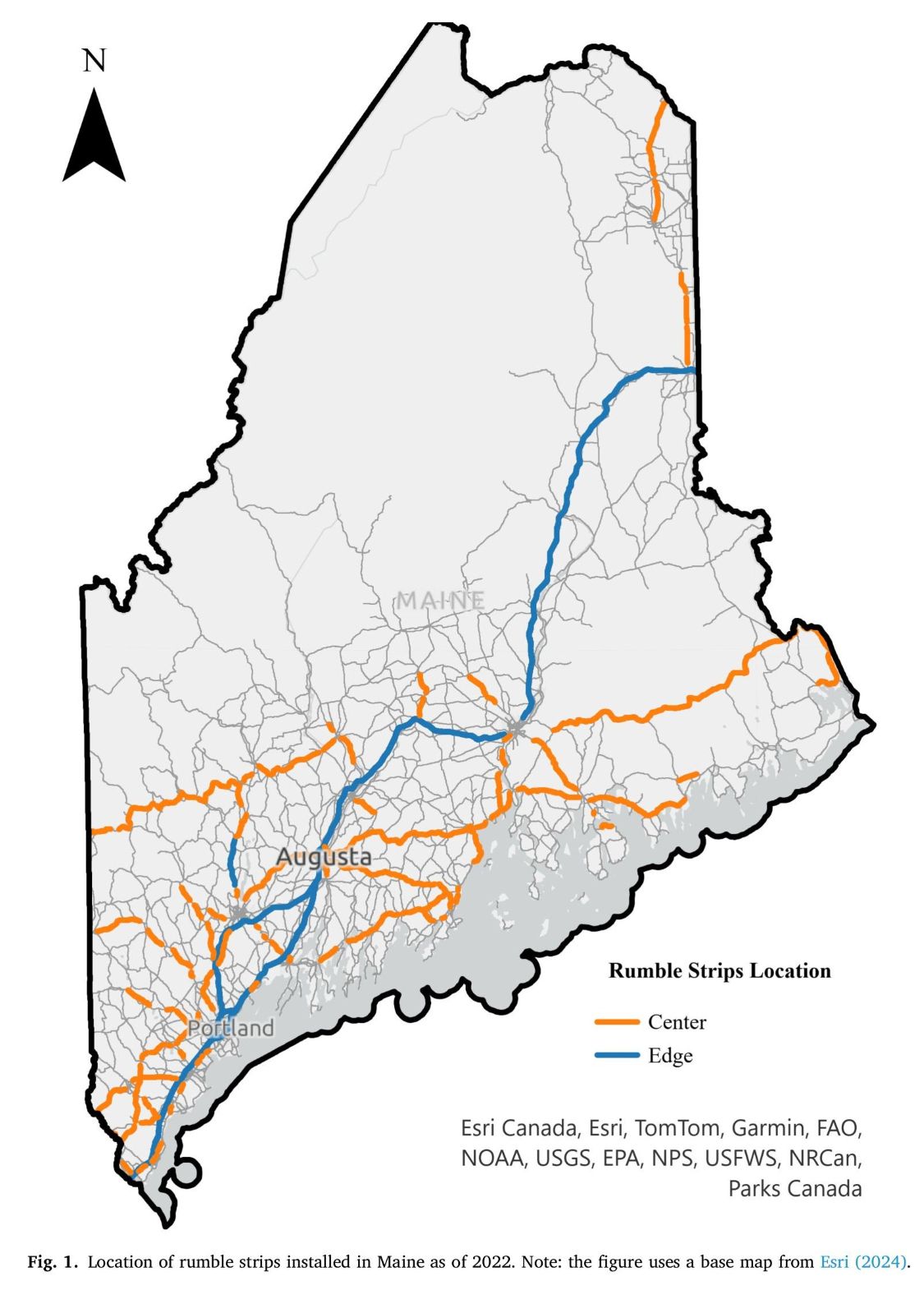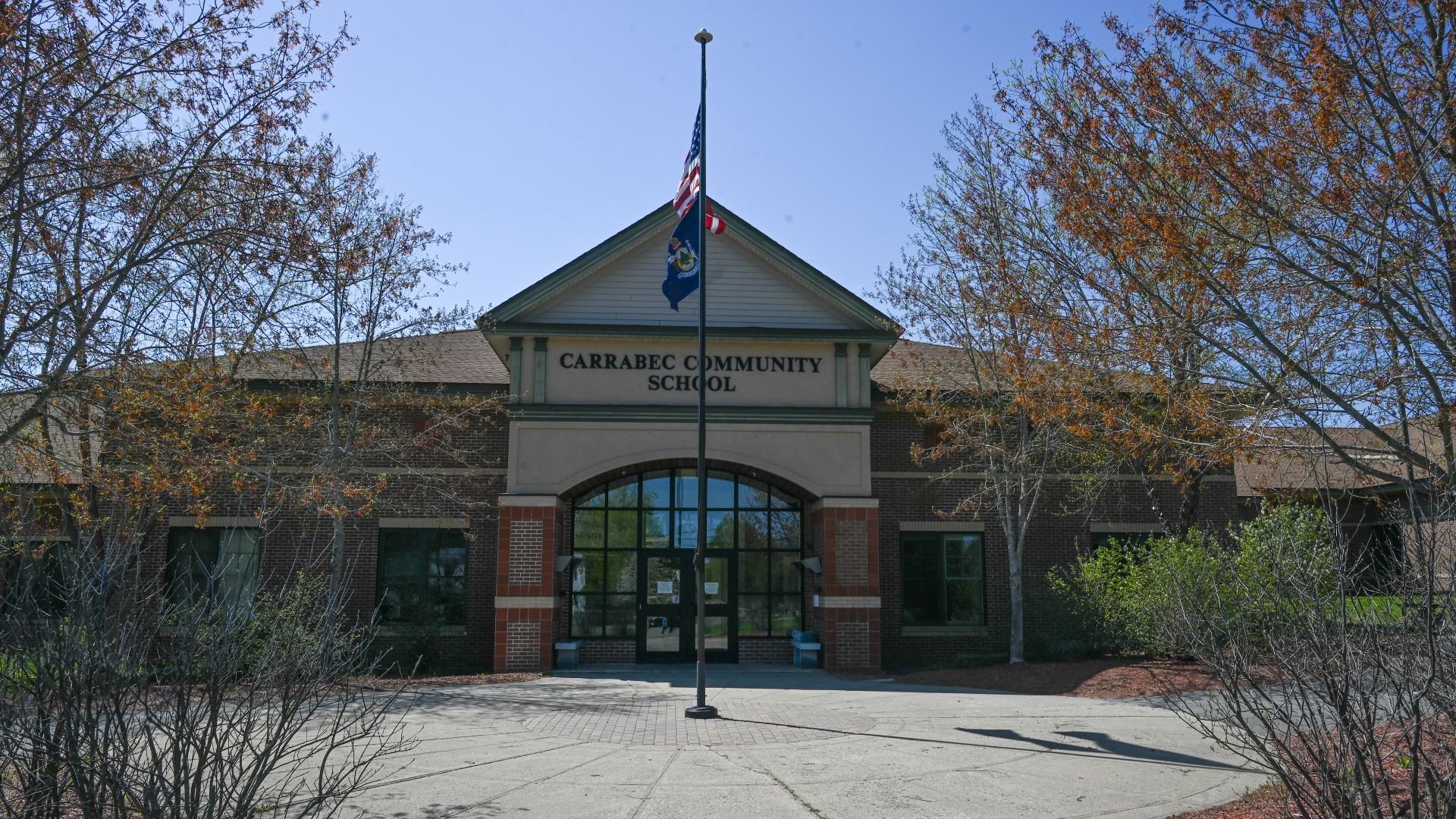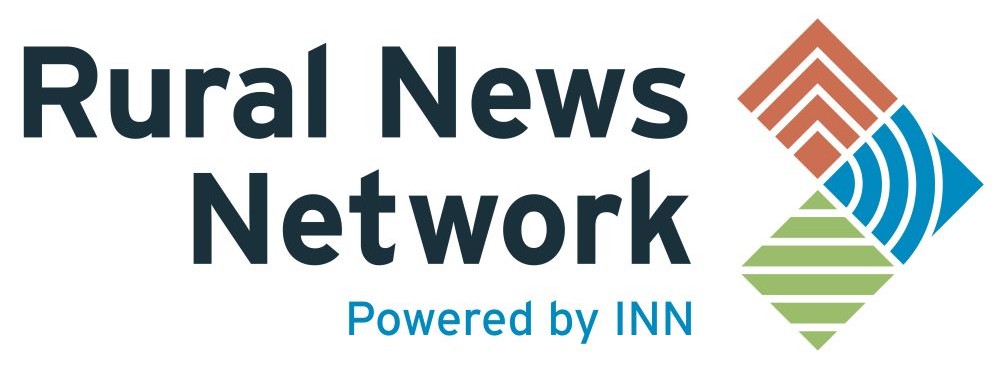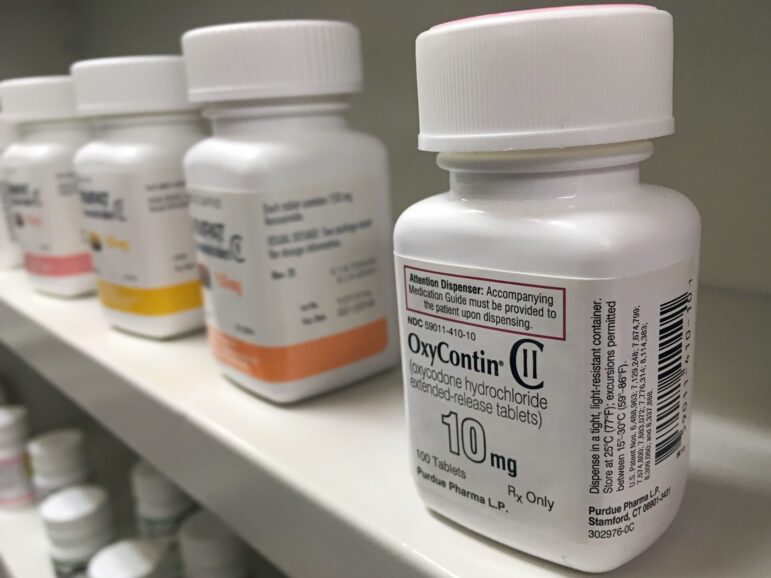Across Maine, towns continue to grapple with school district reorganization

As children played at recess during one of the final weeks of the school year, MSAD 58 Superintendent Laura Columbia explained how several towns began pushing to leave the school district this spring, mainly out of concern that their communities could lose their local schools.
“I’m not coming here to try to close a school, that is nothing any superintendent wants to do,” Columbia said. “But I do want to have our resources going towards our students, and right now I feel like we have so many building needs, that the focus is on buildings, and less about students.”
This school year, MSAD 58 began weighing whether to consolidate some of its four schools to address aging infrastructure costs and preserve resources for students. This prompted a great deal of debate in the community.
“They’re talking about closing schools,” said Strong Selectman Rupert Pratt. “And they’re not talking about closing the high school, where we don’t have students. They’re talking about closing individual schools in the towns. You take a town school away, you shut the town down. People don’t move to a town where they don’t have a school.”
The district currently serves around 560 students from four towns — Strong, Phillips, Avon and Kingfield — and several unorganized territories. Strong is home to the district’s middle school, and Phillips is home to one of its elementary schools.
In May, Strong and Phillips voted to formally start the process to withdraw from MSAD 58; Kingfield and Avon are also looking to start the process. In early June, residents rejected the district’s $12.6 million budget.
If the Franklin County towns succeed in completing the lengthy withdrawal process, they will join a growing list of Maine municipalities that have left their school district in recent years. This includes the town of Eustis, which left MSAD 58 in 2013.
Nearly two decades after Maine made a controversial push to consolidate its school districts, and decades after it adopted a funding formula that aimed to increase equal access to education, towns are continuing to debate whether the cost savings and educational improvements promised by these plans have materialized.
Gov. John Baldacci’s 2007 consolidation bill aimed to condense Maine’s 290 school systems into 80 districts as a way of saving money and improving education. The initiative was met with strong pushback, with many worrying towns could lose their local schools and would have less of a say in school governance.
Since that effort, and the policies in place to enforce it lapsed, 42 towns have chosen to withdraw from their school districts, following a 22-step process set by the state.
The consolidation experiment initially saw the number of districts shrink to 215 in 2010-11 school year, but that number has now risen to 264, according to state data.
As towns explore withdrawal as a way to take back local control of schooling or address budget challenges, the number of school districts will continue to grow: each town that withdraws must form its own school administrative unit, either to run its own schools or to pay tuition to send students back to its former district.
And the cost of education continues to rise: statewide spending on public education has increased by about $1 billion since 2001, according to data from the Maine Education Policy Research Institute.
At the same time, statewide enrollment has dropped from over 200,000 to around 170,000, yet spending has more than doubled from around $7,000 to nearly $18,000 per student.
Some districts have seen the need to close schools. This year, that includes the Agnes Gray School in RSU 17, Sabattus Primary School in RSU 4 and Viola Rand Elementary School in RSU 34. Others are still seeking reorganization: Bremen, Damariscotta, Newcastle and Great Salt Bay Consolidated District are forming RSU 48 on July 1.
While many education policy experts point to consolidation as a way to save on administrative and other costs as buildings fall into disrepair and enrollment continues to drop, a number of towns across the state are pushing in the opposite direction.
The rocky history of consolidation
The effort to consolidate Maine’s school districts did not play out as planned, and while some consolidated districts have seen benefits from the change, many towns have looked for a way out.
University of Maine professor Janet Fairman has studied the issue and said the policy failed in part because there was such a short timeline to implement it, language was unclear, and penalties were delayed and then eliminated, quickly returning the state to a system of voluntary collaboration. The outcome was similar to an older push to condense schools, the 1957 Sinclair Act, which ultimately resulted in a higher number of school districts.
Reflecting on recent withdrawal efforts, Fairman pointed to a “perfect storm” of catalysts: rising costs to operate schools, lower enrollment rates and, in some districts, resources shrinking to the point where communities are weighing whether they should close schools. Small communities that had to partner with bigger communities during the consolidation push often lost voting power over school issues.
“I think that some of the opposition and withdrawals that we may be seeing now may be motivated from a desire to keep those small community schools open even longer than they are really viable, in terms of keeping them staffed and offering students a comprehensive education,” Fairman said.
The state’s school funding model — Essential Programs and Services (EPS) — has also been a flashpoint.
In Embden, a Somerset County town that recently voted against exploring the possibility of withdrawing from RSU 74, both residents for and against withdrawal pointed to a need to revamp how EPS is calculated.
The state takes town valuations, which have been on the rise for the past decade, into account when calculating cost distribution for education in districts. Towns with high valuations like Embden are considered more capable of paying for education. The formula also can lower state assistance when enrollments drop.
And many say the funding minimum set by the state is not sufficient. In recent years, towns have spent more and more above what is allocated by the state through this formula — in fiscal year 2024, school districts across the state raised an additional $604 million for their budgets.
A mix of factors can lead towns to consider withdrawal, but Fairman points to a broader takeaway.
Maine stands out for its extensive school infrastructure: the state has 593 schools and over 260 school districts for just 172,000 students — that’s significantly more schools per student than the national average, according to federal data.
Maine also operates fewer schools in each district, with an average of 2.2 schools per district, while the national average is 5.2 schools per district, MEPRI research shows.
A Brookings Institution report published as part of the 2007 consolidation push argued that it would be difficult for the state to continue supporting its high number of school administrators as enrollment declined.
“Maine is at least as much ‘Administrationland’ as ‘Vacationland’ given the large numbers of especially state and school district administrative personnel that seem to populate the state’s expensive bureaucracies,” the report read.
A rural issue
In a far northern town that shares a border with Canada, Limestone Community School students are starting their summer break, marking nearly six years as an independent school district after the town joined RSU 39 during the 2007 consolidation push. The town of Limestone withdrew from RSU 39 in 2019 out of fears the district would close their local school, which served up to grade 12.
“(Residents) were afraid that by staying in the RSU they would lose their school,” said Limestone Superintendent William Dobbins. “A community is built around a school.”
RSU 39 had voted prior to Limestone’s exit to send the town’s high school students to a school in Caribou and had also weighed closing Limestone’s school to make up for a hefty budget shortfall, The County reported in 2018.
Instead of risking losing a school, Limestone opted to take on a multi-million dollar annual school budget and run a PreK-8 school, while tuitioning high school students out of the district. RSU 39 data shows that Limestone was paying around $600,000 into the school budget prior to withdrawal. Now the town raises around $1 million in local education funds, according to state data.
A Maine Monitor analysis of state data shows that a vast majority of towns that succeeded in withdrawing in the past 20 years were in rural areas, and spiked after penalties associated with the 2007 push were lifted in 2011.
Aroostook saw the most withdrawals, totaling eight. Regional School Unit 20 in Waldo County lost the most towns: between 2013 and 2015, it lost seven municipalities who joined together to form RSU 71. RSU 20 was left with just Searsport and Stockton Springs.
After towns completed the withdrawal process, some formed new regional school units or joined another regional school unit. Many formed new, independent school districts, sometimes mimicking the school units they had prior to consolidation. Some towns, such as Oxbow Plantation, de-organized as a municipality after withdrawing from their school districts.
Shifting costs
Amy Johnson, a researcher at MEPRI, said that withdrawal creates challenges for school districts by pushing costs onto other towns. In some cases, withdrawal can force school districts to weigh cuts.
An analysis of school budget data in districts that lost towns shows that many districts continue to raise similar amounts for education after withdrawals.
Towns that leave often pay tuition to send students back to their original school district, and while this can be a revenue source for school districts and a cheaper way of educating local students for towns, it normally does not cover the total cost it takes to educate a student. This is because tuition rates are capped by the state for each district every year. This year, tuition rates for K-8 education average about $12,000 a year, and secondary education averages about $14,000 a year.
Smaller school districts, such as the ones towns often form after withdrawal, cannot offer the same range of programs as larger districts, Johnson said. While small districts offer benefits like small class sizes and local control over education decisions, they also have their limitations, such as not being capable of offering as diverse a selection of classes, particularly at the secondary level, as larger schools with more resources.
“Of course, these situations are nuanced and there is always a mix of community motivations for wanting to keep their small schools open,” Johnson said. “The challenge is identifying the tipping point at which a small school no longer has enough resources to provide what students need for an adequate education.”


















